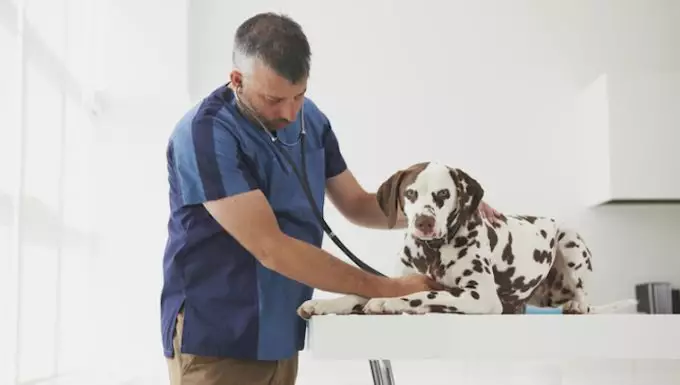Lung cancer, particularly squamous cell carcinoma, typically evokes images of devastating human illnesses, but it’s an unfortunate reality for our canine companions as well. Though relatively rare in dogs, this aggressive cancer form primarily targets older and larger breeds, including beloved pets like Labrador Retrievers and German Shepherds. Notably, this specific type of cancer arises within the lungs, distinguishing it from squamous cell carcinoma found elsewhere in the body. This distinction is crucial, as it highlights the complexity of canine health issues that pet owners must navigate. Recognizing symptoms early can make a significant difference in outcomes, underscoring the importance of awareness among dog owners.
Spotting the Signs: Symptoms of Lung Cancer in Dogs
Identifying lung cancer in dogs requires a keen eye for detail and a basic understanding of the warning signs. Common symptoms such as persistent coughing, labored breathing, and notable weight loss serve as red flags that should prompt immediate veterinary consultation. Other critical symptoms to observe include sneezing, blood in urination or feces, and marked changes in appetite or energy levels. The latter can be particularly disconcerting, as dogs often exhibit a playful demeanor even as they endure severe discomfort. Observing these signs represents a crucial step towards timely intervention, as early diagnosis significantly enhances the potential for effective treatment.
Understanding the Root Causes
While the exact causes of lung cancer in dogs can be multifaceted and complex, certain factors have emerged as significant contributors. Exposure to secondhand smoke stands out as a primary risk factor, emphasizing the indirect effects that human habits can have on cherished pets. Additionally, exposure to environmental toxins and chemicals is a growing concern, as many dog owners may unknowingly expose their pets to harmful substances. Age plays an undesired role as well, with older canines succumbing to the disease more frequently than their younger counterparts. Understanding these risk factors is not merely an academic exercise; it serves as a vital wake-up call for responsible pet ownership in our modern world.
The Diagnostic Journey: Getting to the Bottom of It
When a dog exhibits the symptoms associated with lung cancer, the path to diagnosis generally begins at the veterinary clinic. The veterinarian’s process is methodical: they will begin with a thorough history-taking, asking pet owners about noted changes in behavior and health, as well as addressing breed-specific concerns. This step is crucial since certain breeds may have predispositions to various health conditions. Following the initial assessment, particularly invasive procedures like endoscopies may be conducted to directly visualize any tumors and obtain tissue samples. A biopsy ultimately confirms the diagnosis. This stage of the journey can be emotionally taxing for pet owners, as they grapple with uncertainty about their furry friends’ health.
A Tactical Approach to Treatment
Once diagnosed with lung cancer, treatment typically involves surgical interventions to excise malignancies, paired often with chemotherapy to combat residual cancer cells. This holistic approach can be effective but requires careful management during recovery. It is critical to create a nurturing and tranquil home environment, where recovery can unfold away from unnecessary stressors. Additionally, veterinarians often recommend individualized exercise plans, acknowledging the need to balance activity with rest. This period of recuperation and healing is crucial, as it lays the groundwork for potential long-term wellness.
Understanding lung cancer in dogs isn’t just about acknowledging its existence; it’s about fostering proactive care and informed choices. The emotional toll on pet owners navigating this terrain can be profound, but with insight and focus, they can provide their furry companions with the love and support they need during such a challenging time.

